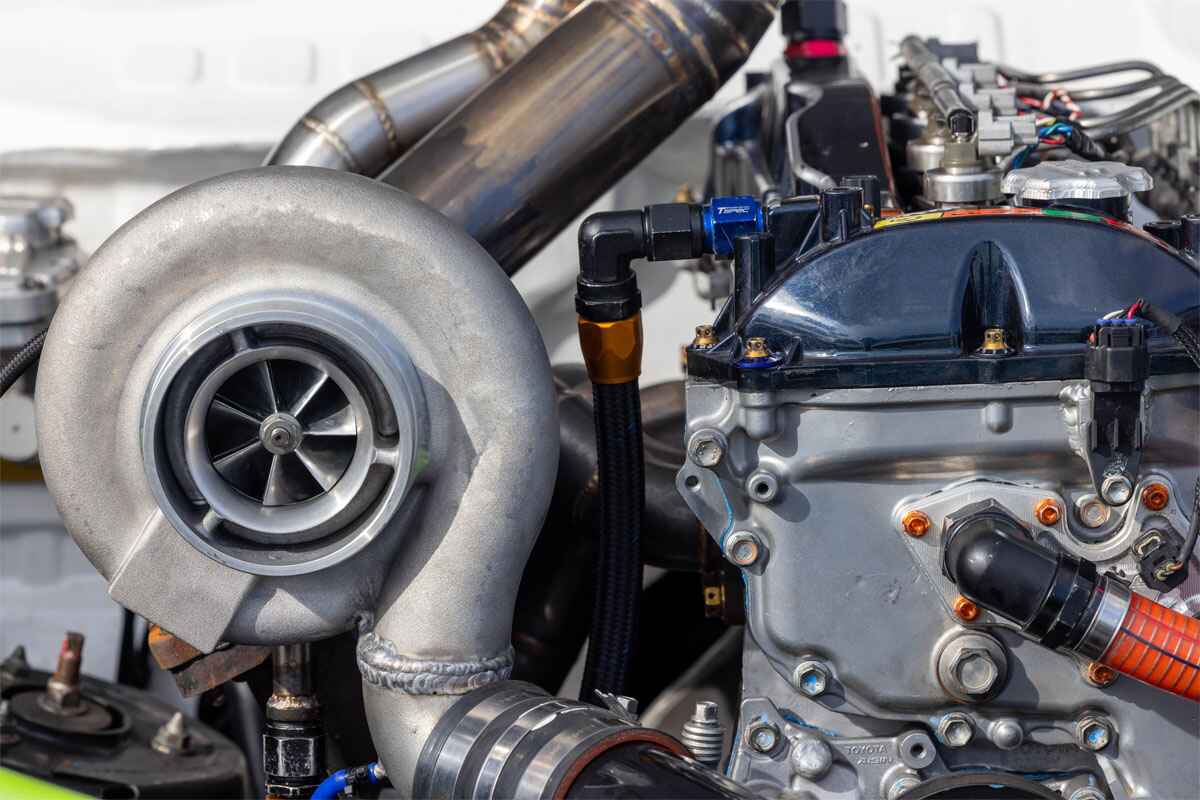Turbochargers are a power booster attached to a vehicle’s engine that is manufactured to optimize general efficiency and increased performance. This is why a lot of vehicle manufacturers are deciding to turbocharge their vehicles. NOTE: When installing a turbocharger, it is recommended to also upgrade your torque converter.
How Do Turbochargers Work?
A turbocharger is comprised of 2 parts connected to one another by a shaft. One side, heated exhaust gas rotates the turbine that is joined to another turbine which pulls in air, then compresses it into the vehicle’s engine. This compressed air is what provides the engine the supplemental power and efficiency and since more air goes in the combustion chamber, additional fuel can be added for increased power.
Advantages of Turbochargers
Apart from the added power, turbochargers are often referred to as devices that provide “free power” since, unlike superchargers, it does not require the engines power for driving it. The heated and expanding gases coming out of the engine are what powers a turbocharger so there is no withdrawal of the engine’s overall power. Engines that are turbocharged are also not impacted in the same manner as non-turbocharged engines are when they go higher up in altitude. The higher in altitude a non-turbocharged engine goes, the more challenging it becomes for it to get oxygen because of the insufficient atmosphere. A turbocharger bypasses this issue since it forces the oxygen into the engine’s combustion chamber, often at 2 times the outside air pressure.
A turbocharger also increases the fuel economy of a vehicle, nevertheless, there is a false impression in relation to turbocharged vehicles and fuel economy. Taking a non-turbocharged engine and installing a turbocharger on it is not going to improve fuel economy. The way in which manufacturers improve fuel economy through turbocharging is by downsizing an engine and then turbocharging it. For instance, take a 2.5L inline-4-cylinder non-turbocharged engine and decrease the displacement to 1.4L and then turbocharging it. The smaller, turbocharged engine is going to continue to have the same performance data (or somewhat better) but due to the smaller displacement, at the same time use reduced fuel.
Disadvantages of Turbochargers
Turbochargers have 2 primary disadvantages when compared to non-turbocharged or supercharged engines. One is heat. Because turbochargers are powered by hot exhaust gases, it gets exceedingly hot. Occasionally under certain engine conditions, the turbocharger itself could begin glowing bright red but of course this doesn’t happen in day-to-day driving conditions; it happens when the engine is driven to its limits for an extended amount of time. This is the reason you see some turbocharged vehicles with vents in their hoods or down their sides, it’s to aim for getting air circulating through the engine compartment and to keep things cool.
An additional disadvantage of a turbocharger is something referred to as turbo lag. In some cases, whenever you hit the throttle, there is a slight pause between the time you want power from the engine and the moment you actually begin to feel it. That is turbo lag. When engine speed is low, there aren’t many exhaust gases passing through the turbocharger so when you do want power from the engine, the turbocharger turbine requires time to begin rotating at an ideal speed. The impact of this can be decreased by downshifting to a lower gear however sharp drivers can still occasionally notice the split delay in response.
Roadrunner Converters Offers Torque Converters for Sale
Roadrunner Converters offers many torque converters for sale online. We offer GM Torque Converters, Ford Torque Converters, Diesel Torque Converters, Towing Torque Converters, Street Torque Converters and more.





